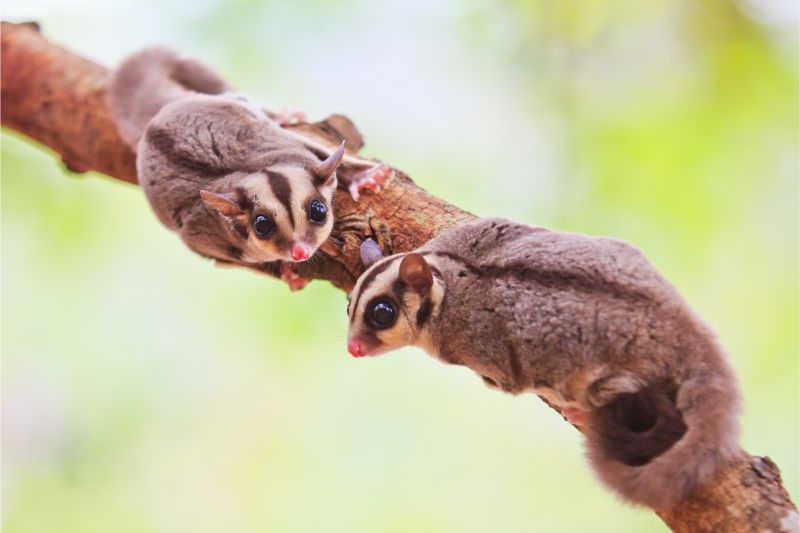
The care and keeping of exotic pets has long fascinated humans, and the practice has grown in popularity in recent years. Sugar gliders are popular exotic pets, beloved for their small size, huge eyes, social nature, and affectionate attachment to their handlers.
Although they look like a cross between a squirrel and a mouse, sugar gliders are actually marsupials that are native to Australia, Tasmania, Indonesia, and Papua-New Guinea. The name “sugar glider” comes from their love of sweet foods and their gliding membrane (much like a flying squirrel).
As with all exotic pets, sugar gliders require specific conditions in order to survive and thrive. Our guide to the basics of sugar glider care will help you get started on your journey as an exotic pet owner!
Sugar Glider Housing
Sugar gliders need as large a cage as possible in order to allow them to climb and glide. Sugar gliders are escape artists, so wire or bars should be spaced no more than 0.5” apart and lock securely.
The bottom of the cage can be lined with shredded paper bedding and should be spot cleaned daily and completely changed/cleaned weekly. Multiple food dishes, as well as a water bottle with a sipper spout, should be available.
All sugar glider cages should contain a pouch for sleeping and hiding during the day (marsupials are raised inside their mother’s body pouches), as well as plenty of branches and shelves from which to perch and glide. Bird swings, bird toys, and rodent wheels are also good options for exercising your glider.
Sugar Glider Care and Feeding
Sugar gliders are omnivores and need a combination of plant and animal matter to thrive. Commercially available sugar glider food is a good start. Supplement their diet with fresh vegetables, fruit (minimal amounts), and small portions of protein, such as cooked eggs, lean cooked meat, commercial pellets for insect-eating animals, and mealworms or crickets. A powdered calcium supplement should be sprinkled over their food daily.
Sugar gliders are nocturnal and can live up to 15 years in captivity, so be absolutely sure you’re ready to commit to this lifestyle before adopting one of these exotic pets.
Snuggle Time
Sugar gliders are extremely social animals that can bond to humans and other sugar gliders. They do much better when kept in pairs, either same-sex or a female with a neutered male. Daily handling and attention is critical when it comes to bonding with your glider, just make sure you do so in a glider-proofed room, as these tiny furballs are known escape artists!
Common Concerns
Like all pets, sugar gliders should be examined regularly by a veterinarian. Sugar gliders can fall victim to a variety of illnesses and diseases, including malnutrition, metabolic bone disease, dental issues, and stress-related conditions. Without proper exercise or when fed improperly, sugar gliders have a tendency to become obese. Obese sugar gliders are at risk for many of the same health conditions as obese humans, including heart disease and arthritis.
Do you have additional questions regarding sugar glider care? West Park Animal Hospital is proud to offer full service exotic pet care. Our expert staff is ready to answer any questions you may have. Please feel free to give us a call!
The post Cuteness Overload: Sugar Glider Care 101 appeared first on West Park Animal Hospital Blog.

